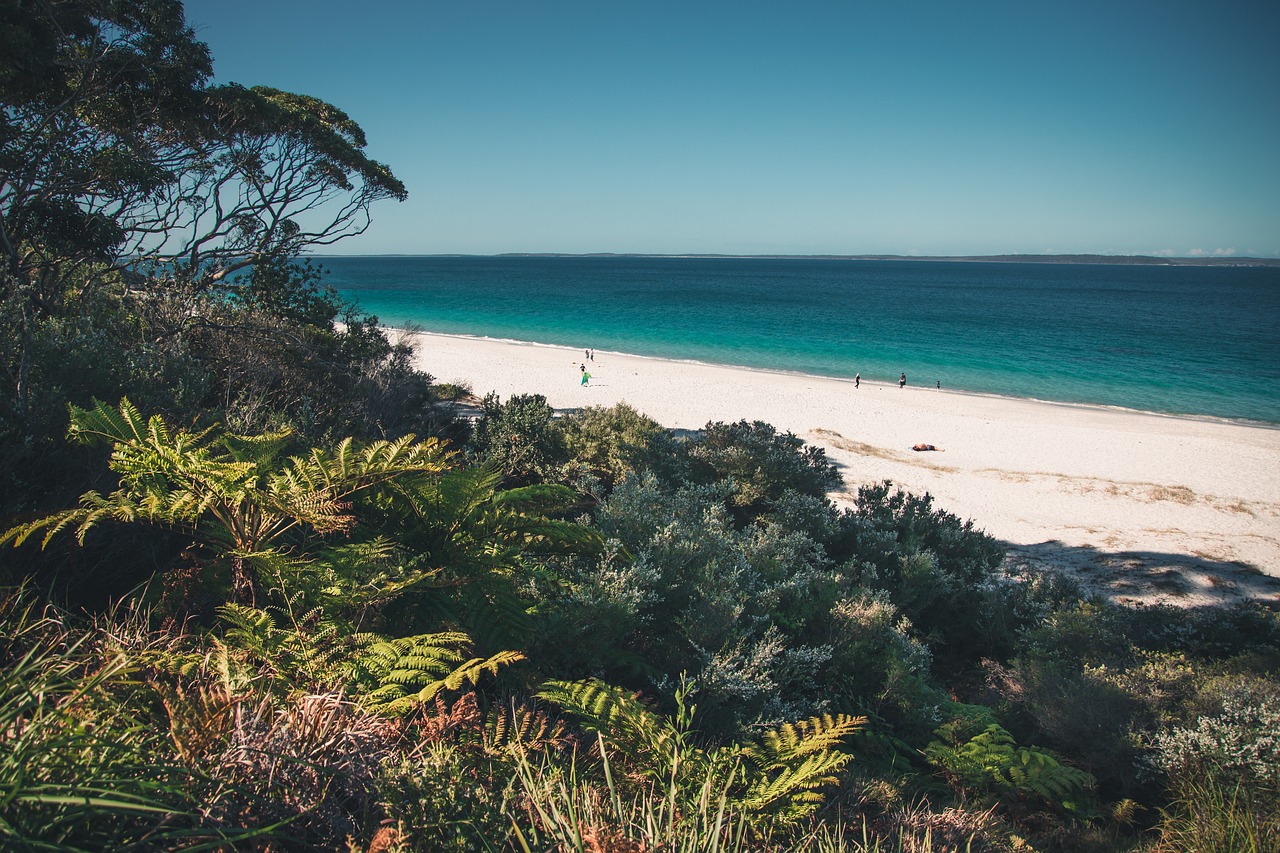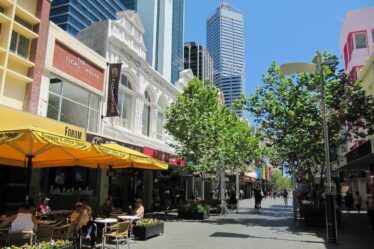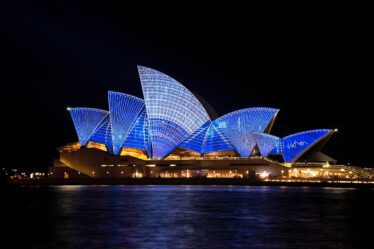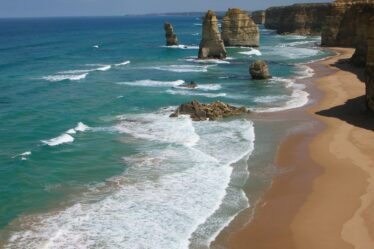
Jervis Bay, located on the southeastern coast of Australia in New South Wales, is a pristine and picturesque destination renowned for its white sandy beaches, crystal-clear waters, and abundant marine life. This coastal paradise offers a unique blend of natural beauty, outdoor adventures, and rich cultural heritage. Whether you are looking for a relaxing beach vacation, thrilling water activities, or an immersive nature experience, Jervis Bay has something to offer for every traveler. This comprehensive guide delves into the highlights of Jervis Bay, from its stunning beaches and marine reserves to its vibrant local culture and practical travel tips.
The Natural Beauty of Jervis Bay
Hyams Beach
Hyams Beach is famous for having some of the whitest sands in the world. The soft, powdery sand and clear turquoise waters make it a popular destination for beachgoers and photographers. It’s an ideal spot for sunbathing, swimming, and beachcombing.
Booderee National Park
Booderee National Park is a protected area that showcases the natural beauty and biodiversity of the region. The park is home to lush rainforests, coastal heathlands, and diverse wildlife. Visitors can enjoy numerous activities, including:
- Hiking: The park offers several walking trails, such as the White Sands Walk and the Green Patch Walk, which provide stunning coastal views and opportunities to spot native wildlife.
- Camping: Booderee has excellent camping facilities, allowing visitors to stay overnight and immerse themselves in the natural surroundings.
- Botanic Gardens: The Booderee Botanic Gardens feature a variety of native plants and are the only Aboriginal-owned botanic gardens in Australia.
Jervis Bay Marine Park
Jervis Bay Marine Park is a haven for marine life and offers excellent opportunities for snorkeling, diving, and boating. The park’s diverse ecosystems include seagrass beds, rocky reefs, and sandy seabeds, which support a wide range of species such as dolphins, seals, and sea turtles.
Outdoor Activities and Adventures
Whale Watching
Jervis Bay is a prime location for whale watching, particularly during the migration seasons from May to November. Humpback whales, southern right whales, and occasionally orcas can be seen breaching and playing in the bay’s waters. Several tour operators offer boat trips that provide an up-close and personal experience with these magnificent creatures.
Kayaking and Stand-Up Paddleboarding
The calm and clear waters of Jervis Bay are perfect for kayaking and stand-up paddleboarding. Paddling along the coastline allows you to explore hidden coves, pristine beaches, and encounter marine life such as dolphins and rays.
Scuba Diving and Snorkeling
Jervis Bay offers some of the best diving and snorkeling spots in Australia. The underwater landscape includes vibrant coral reefs, underwater caves, and diverse marine life. Popular dive sites include:
- The Docks: Known for its rocky reefs and abundant fish life.
- Point Perpendicular: A dramatic dive site with steep cliffs and large boulders.
- Honeymoon Bay: A sheltered bay perfect for beginners and snorkelers.
Cultural and Historical Highlights
Aboriginal Heritage
Jervis Bay has a rich Aboriginal heritage, with the traditional owners being the Wreck Bay Aboriginal Community. The area is of great cultural significance, and visitors can learn about the local Aboriginal culture through guided tours and cultural experiences. Booderee National Park, in particular, offers insights into the traditional practices, stories, and knowledge of the local Aboriginal people.
Historic Sites
The region around Jervis Bay is home to several historic sites that reflect its maritime and colonial history. Key sites to visit include:
- Cape St George Lighthouse: The ruins of this historic lighthouse offer panoramic views of the bay and provide a glimpse into the area’s maritime history.
- Huskisson: This charming village has a rich maritime history and is home to the Jervis Bay Maritime Museum, which features exhibits on the region’s naval and shipbuilding heritage.
Local Cuisine and Dining
Fresh Seafood
Jervis Bay is renowned for its fresh seafood, thanks to its rich marine environment. Local restaurants and eateries offer a variety of seafood dishes, from oysters and prawns to fish and chips. Popular dining spots include:
- The Huskisson: A waterfront restaurant known for its seafood platter and stunning views of the bay.
- Pilgrims: A vegetarian café that offers delicious and healthy options, including locally sourced produce.
Local Markets
Exploring the local markets is a great way to experience the region’s culinary offerings and support local producers. The Jervis Bay Maritime Museum hosts regular markets where visitors can find fresh produce, artisanal goods, and local crafts.
Accommodation Options
Jervis Bay offers a wide range of accommodation options to suit different preferences and budgets. From luxury resorts and boutique hotels to holiday parks and campgrounds, visitors can find the perfect place to stay.
Luxury Resorts
For a luxurious and relaxing stay, consider booking a room at one of the high-end resorts in the area. These resorts often feature stunning views, spa facilities, and fine dining restaurants. Notable options include:
- Bannisters Pavilion: A stylish resort located near Mollymook Beach, offering contemporary rooms and a rooftop pool.
- Paperbark Camp: A unique glamping experience set in a tranquil bushland setting, with safari-style tents and gourmet dining.
Family-Friendly Accommodation
Families visiting Jervis Bay will find plenty of options that cater to their needs, including holiday parks with cabins, campsites, and recreational facilities. Popular family-friendly accommodations include:
- Jervis Bay Holiday Park: Offers a range of accommodation options, including cabins and powered campsites, with amenities such as a swimming pool and playground.
- Huskisson Beach Tourist Resort: Located close to the beach, this resort offers cabins, caravans, and camping sites, along with facilities like a pool and barbecue areas.
Practical Travel Tips
Getting to Jervis Bay
Jervis Bay is easily accessible by car from major cities in New South Wales. The drive from Sydney takes approximately 2.5 to 3 hours, while the drive from Canberra takes about 2 hours. Public transport options include train and bus services, with the nearest train station located in Bomaderry (Nowra).
Best Time to Visit
Jervis Bay can be enjoyed year-round, but the best time to visit depends on your preferred activities:
- Spring (September to November): Ideal for whale watching, hiking, and enjoying mild weather.
- Summer (December to February): Perfect for beach activities, swimming, and water sports.
- Autumn (March to May): Offers pleasant weather and fewer crowds, making it a great time for exploring the outdoors.
- Winter (June to August): Cooler temperatures are perfect for hiking and cozy beach walks, and whale watching season is in full swing.
Packing Essentials
- Beach Gear: Swimsuits, towels, sunscreen, and beach umbrellas are essential for enjoying the beautiful beaches.
- Outdoor Gear: Comfortable walking shoes, hats, and reusable water bottles are important for hiking and exploring the national parks.
- Snorkeling/Diving Equipment: If you plan on snorkeling or diving, consider bringing your own gear, although rentals are available locally.
Conclusion
Jervis Bay, Australia, is a coastal paradise that offers a diverse array of natural attractions, outdoor activities, and cultural experiences. Whether you’re drawn to the pristine beaches, the vibrant marine life, or the rich cultural heritage, Jervis Bay provides a memorable and enriching travel experience. Plan your visit to this stunning destination and immerse yourself in the beauty and tranquility of Jervis Bay.


